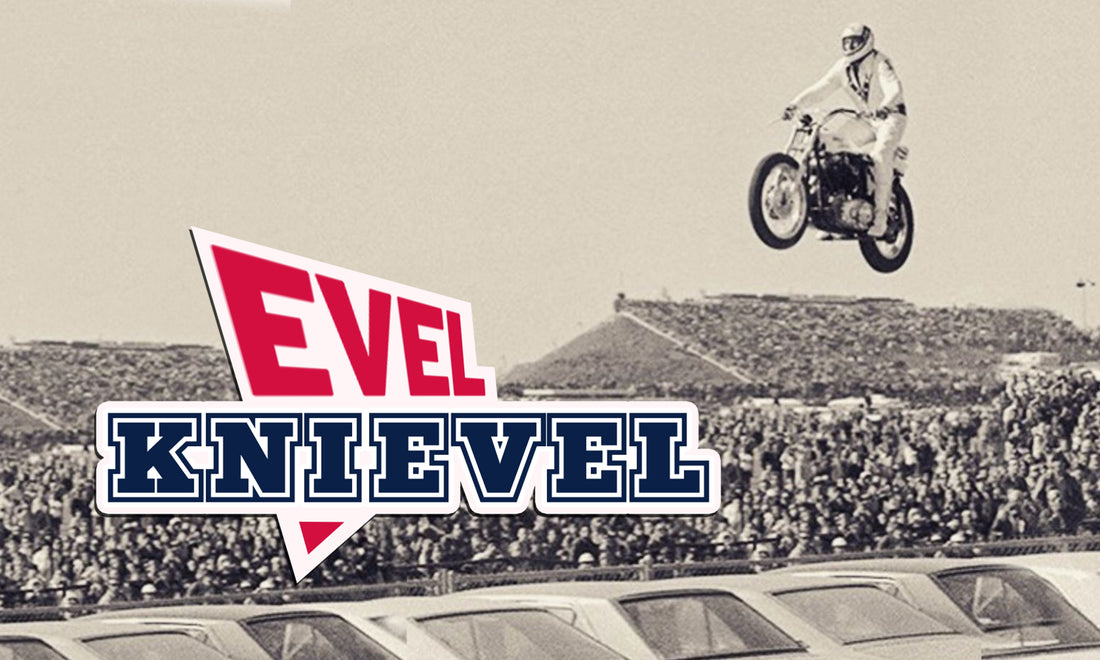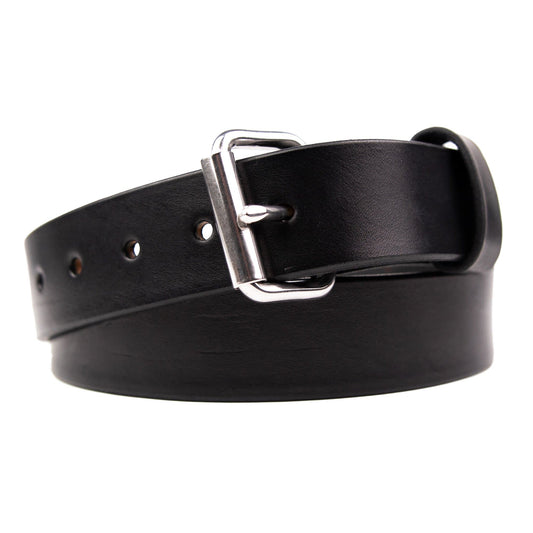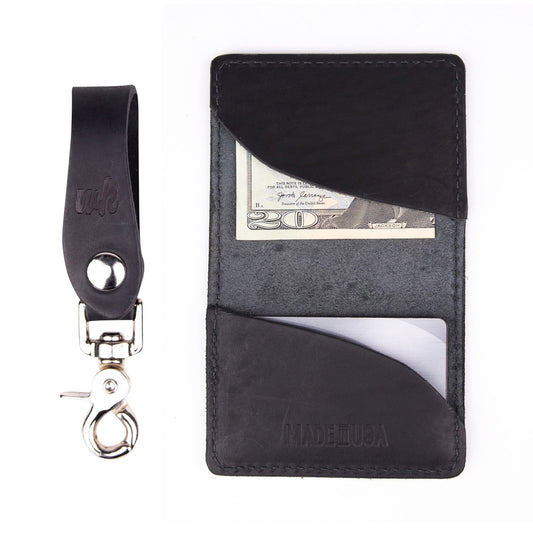One name undoubtedly comes to mind when you think of the word daredevil: Evel Knievel. From humble beginnings to flying high across TV screens worldwide, Knievel defied death as a stunt cyclist for decades. Breaking more than bones, he also broke numerous records throughout his stellar career.
In addition to being known as a daredevil, Knievel wanted to be known as a man of his word. He put his life on the line more than once simply because he said he would, and he did not want to disappoint his fanbase or himself for not following through, even when he should have focused on his well-being. Evel Knievel proved to himself and the world time and time again that while his bones were breakable, his spirit was not.

Evel origins
On October 17, 1938, Robert Knievel was welcomed into the world in Butte, Montana. He was the oldest of two boys to parents Robert and Ann Marie Knievel. After his parents divorced two years later, shortly after the birth of his brother, he went to live with his paternal grandparents.
At the ripe old age of 8, the course of Knievel’s life changed when he witnessed the incredible, death-defying daredevil Joie Chitwood. While the little boy who gazed upon the terrifying stunts with wide-eyed amazement might not have been aware of how that night would forever change his life, it was his destiny to become the same type of entertainer.
As he got older, Knievel decided that school was not for him and dropped out of high school when he was in the tenth grade. He felt that he would be better suited for the working world, and he was able to secure a job at the local copper mine.
Knievel was able to work his way up in the mines to the position of Earth Mover Driver. That stint was short-lived, as he was fired abruptly for doing a “wheelie” while driving the machinery. At the end of this stunt, Knievel crashed the earth mover into a power line, and the entire town lost power for several hours.
Continuing to pursue his next rush, the young daredevil found himself on the other side of a jail cell after he was arrested following a police chase where he attempted to evade the cops by fleeing on his motorcycle, ultimately crashing his bike.

While in jail, one of Knievel’s cellmates was a man named Knofel. Knofel was dubbed “Awful Knofel” by guards. As you might have guessed, Knievel was given the nickname “Evil Knievel”. The nickname stuck, with modifications that would follow later in his life.
As he continued to find himself in similar predicaments, Knievel was forced to make a decision: go to jail or join the military. He chose the latter.
The pursuit of Evel
Once he returned from the military, Knievel decided to try to settle down and start a family. Even after becoming a father, his need for an adrenaline rush did not subside. He continued to speed around on his bike and perform crazy stunts. He also found the rush through bull riding on the rodeo circuit, becoming a well-respected ski jumper, a founding member of a semi-pro hockey team, trying out for a professional team, and joining the motocross circuit.

Knievel’s restless spirit seemed to lead him down many different career paths. He started a business as a hunting and fishing guide, worked as an insurance salesman, opened a Honda motorcycle dealership, and, following his dealership’s demise, became a motorcycle salesman.
Knievel began to actively pursue his passion of bringing his amazing stunt driving to an appreciative audience when he started to self-promote his own stunt show promising to wow the crowd with a fantastic feats where he touted a final jump that would clear a 20-foot box filled with rattlesnakes and two mountain lions.
Leaving the onlookers breathless, Knievel’s back wheel hit the box of snakes. Thankfully, he was able to stick the landing in the end.
For future endeavors, Knievel knew that he needed to be able to focus his time on practicing his main jumps. The answer to that was to hire additional performers who could wow the crowd until it was his turn to amaze with his latest and greatest jump. Bobby Knievel and His Motorcycle Daredevils Thrill Show was born.

Finding a sponsor for his next venture, Knievel secured the backing of ZDS Motors Inc’s, Bob Blair. Blair would only pledge his support to Knievel’s performance if he agreed to change the show’s name to Evil Knievel and His Motorcycle Daredevils Thrill Show. Knievel agreed, provided he could change the spelling to “Evel” because he did not want to mistakingly become associated with the Hell’s Angels motorcycle gang.
Evel is born
Though the first scheduled event was canceled due to inclement weather, the show must go on, and it was rescheduled for February 10, 1966, in Barstow, CA. During the show’s grand finale, Knievel promised to take flight while he jumped spread-eagle while still holding the handlebars of his careening bike.

This time, Knievel was not as lucky. Jumping a split second too late, the bike hit the stunt man in his groin, severely injuring him and putting him out of commission for an extended period.
While he recovered from his injuries, the troop disbanded, but Knievel’s need to bring his death-defying stunts to the people of the world lived on. While most in the industry were happy with jumping over animals, Knievel wanted to push the envelope. He would jump cars.
Traveling as a solo act from small town to small town, Knievel began to amass a following. After he was successful with one jump, he would add another car the next time. Fans ate it up. They continued to come back again to see if he would clear the jump or if he would crash and burn.

In June of ’66, for his latest and greatest jump, Knievel’s promise to clear twelve cars and a cargo van attracted the press. However, unable to build up enough speed to complete the feat, the bike’s back wheel hit the top of the van, and the front wheel hit the front of the ramp. Our hero was sent flying. When he landed, he’d broken his arm and several ribs. Though he was in the hospital and out of commission for a while, the accident garnered him tons of publicity. His career as a daredevil started to take on a life of its own.
After recovering, Knievel continued to make daring jumps that pushed the envelope. Some were perfectly successful. Others, not so much. Regardless of the end result, Knievel’s star rose a bit further with each jump.
Evel rises
During some time off in Las Vegas, Knievel happened upon the fountains at Cesar’s Palace. It became his mission to fly over the fountains on his bike while televising the event to a captivated audience.

Knievel decided to employ any means necessary to ensure that his vision came to fruition, even if that meant embellishing the truth a bit. He even went so far as to pose as different people he thought might influence the CEO of Cesar’s to allow the event to occur.
After taking on the guise of different lawyers and TV executives claiming to be interested in televising the event, the CEO agreed, and the scene was set for the stunt man to make his most impressive jump to date.
While the jump was a thing of beauty and wonder, the landing was another story altogether. The daredevil ended up landing in the parking lot of the neighboring casino. His injuries included multiple broken bones in his legs, arms, hips, and wrist and a concussion that kept Knievel in a coma for the better part of a month.

ABC’s The Wide World of Sports, which declined to televise the event live, decided to put it on the air later. It was one of the most-watched sporting events of the time, and they paid far more than Knievel asked for initially. His star continued to rise even though he was oblivious to the fact.
Upon awaking, Knievel let the world know that his career was far from over and this was just a temporary setback, even though doctors told him that the probability that he would never walk again was high.
In order to prove to his fanbase that he was sincere about not hanging up his helmet, Knievel announced what he hoped would be the biggest jump of his or any other stunt man’s career: he was to traverse the Grand Canyon.

Due to the fact that the US Government would have to approve this event, Knievel would find himself embroiled in negotiations and trying to cut through red tape for quite some time. While he kept his eye on the prize, the stuntman extraordinaire continued to please the public by giving them the excitement they were after through his world-class performances.
Bones were broken, and near-career-ending accidents occurred, but Knievel continued to pursue his goal. It wasn’t until some years later, in 1971, that he finally took “no” for an answer when the US Government once and for all denied him access to the air space needed to make the jump across the Grand Canyon.
Not one to be held down long, Knievel decided to get as close to his original goal as possible, and he searched the country over in an effort to find a location that might be considered somewhat comparable to his original point of interest. He found it in Twin Falls, Idaho, in Snake River Canyon.

Proud that he “bought [his] own canyon,” Knievel prepared to give the performance of his life to date. In what took years of preparation, the stunt man went so far as to hire a NASA engineer to develop a rocket-powered bike for the event. And because ABC sports refused to pay his asking price to televise the spectacle, Knievel hired a company that would broadcast his jump live in movie theaters across the nation.
In September 1974, he once again prepared to take flight and defy death as he jumped his bike across the canyon. Unfortunately, the jump did not go as planned, and Knievel landed at the bottom of the canyon just shy of the water. He escaped with only minor injuries.
Knievel’s next big jump occurred in May of 1975. While attempting to jump over 13 busses in front of 90,000 live spectators and a worldwide television audience at Wembley Stadium, he crashed. Knievel announced his retirement with a broken back, then somehow proceeded to walk away.

Evel returns
Knievel felt he had more to offer his fans despite announcing his retirement from the stunt world. On October 25, 1975, he broke the record for jumping the most busses on a Harley, helped the Wide World of Sports garner its largest audience for the time, and broke his own record for longest jump when he cleared 14 busses at King’s Island. Again, Knievel decided he was to retire.
Yet again, his retirement was short-lived. Though his attempted jumps weren’t as daring as his previous stunts, he continued to thrill audiences. With the blockbuster hit Jaws as his inspiration, in January of 1977, Knievel prepared to perform a televised stunt where he was to jump a tank filled with sharks.
During a practice jump, tragedy struck as Knievel crashed into a cameraman after losing control of his bike. Feeling tremendous guilt because the cameraman lost an eye, he hung up his stunt helmet for good, turning his professional attention to public speaking.

Evel’s end
The world's great daredevil passed away in 2007 at the age of 69 after a lengthy battle with pulmonary fibrosis. He was memorialized in his hometown of Butte, Montana.
Good at being Evel
Beyond being remembered for his incredible stunts, Evel Knievel will forever be remembered as being an inspiration to people the world over. He was always ready to give his fans a thrill, even at the expense of his own well-being.
Knievel may have paved the way for many other stunt performers, but it is doubtful that any will come close to being the showman he was, capturing the hearts of thrill seekers around the globe. He indeed was good at being Evel.





